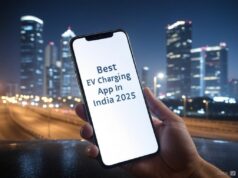The Chevy Volt is a plug-in hybrid car that can run on both electricity and gas.
But what if your Chevy Volt is not charging properly? What if you plug it in and nothing happens?
Or what if the charging time is much longer than expected?
This article will help you troubleshoot some common problems that may prevent your Chevy Volt from charging and offer you six ways to fix them.
Whether it’s a faulty charger, a bad battery, or a software glitch, we’ll show you how to get your Chevy Volt back on the road in no time.
Why is Chevy Volt Not Charging?

There are several possible causes for why your Volt may not be charging, such:
1. A faulty or damaged charging cord or port
2. A low or dead 12-volt battery
3. A problem with the high-voltage battery or its cooling system
4. A software glitch or error code
5. A setting or preference issue
6. A problem with the charging station or outlet
How to Fix Chevy Volt Not Charging Issue?
Depending on the cause of the charging issue, here are some troubleshooting steps to resolve the problem:
FIX #1. Check the charging cord and port
Inspect the charging cord and port for any damage, wear, or corrosion. Ensure they are clean and dry. If necessary, replace them.
FIX #2. Examine the 12-volt battery
Check the 12-volt battery for signs of low charges, such as dim lights, weak horns, or slow cranking. Measure the voltage using a voltmeter, aiming for a reading of approximately 12 to 13 volts.
If the voltage is lower, consider jump-starting your Volt or replacing the 12-volt battery.
FIX #3. Assess the high-voltage battery and cooling system
Monitor the high-voltage battery’s temperature and state of charge using the driver information center. Look out for warning messages like “Service High Voltage Charging System” or “Propulsion Power Reduced.”
If you encounter these messages, consult a certified dealer for diagnosis and repairs.
FIX #4. Check for software updates and error codes
Request a diagnostic report using the OnStar app or button to identify any software updates or error codes affecting your Volt’s charging system.
Online forums and websites may provide insight into known issues and potential solutions.
Resetting your Volt’s computer system might resolve some codes, while others may require assistance from a dealer.
FIX #5. Verify charging settings and preferences
Review the charging settings and preferences on your Volt’s infotainment system.
Ensure you have selected the correct charging mode (immediate or delayed), current level (8 or 12 amps), and location (home or away).
Optimize your Volt’s charging efficiency and cost by adjusting the charging schedule and rate limit.
FIX #6. Inspect the charging station or outlet
Ensure the charging station or outlet is compatible with your Volt’s charging cord and port.
Check if it is functioning correctly and delivering adequate power output. Measure the voltage and current of the outlet using a multimeter.
Attempt charging from a different station or outlet to determine if it makes a difference.
Further Assistance
If the above solutions do not resolve the issue, contact your Volt dealer or customer service for further assistance. They may be able to troubleshoot remotely or arrange a tow service if necessary.
How to extend a car’s battery life?
Drive Efficiently
Practice smooth acceleration and braking. Avoid aggressive driving habits as they consume more battery power. Use the vehicle’s regenerative braking feature to recharge the battery while decelerating.
Maintain Moderate Speeds
Higher speeds increase aerodynamic drag, which can reduce battery efficiency. Try to maintain a moderate speed to maximize your battery range.
Minimize Electrical Load
Reduce the use of high-power electrical accessories such as air conditioning, heated seats, and defrosters when possible. These accessories draw power from the battery and can decrease its overall life.
Plan and Combine Trips
Efficiently plan your routes to avoid unnecessary driving and combine multiple errands into one trip. This way, you can reduce the number of trips and maximize your electric range.
Precondition the Cabin
Use the vehicle’s pre-conditioning feature while the car is still plugged into the charger.
This allows you to warm or cool the cabin using electricity from the grid, rather than relying on the battery after you start driving.
Avoid Extreme Temperatures
Extreme heat or cold can affect the battery’s performance and longevity. Whenever possible, park your vehicle in shaded areas or a garage to minimize exposure to high temperatures.
Maintain Tire Pressure
Keep your tires properly inflated according to the manufacturer’s recommendations.
Underinflated tires increase rolling resistance, which requires more energy from the battery to maintain speed.
Regular Maintenance
Follow the manufacturer’s recommended maintenance schedule for your Chevy Volt.
This includes checking and replacing the air filter, ensuring the cooling system is functioning correctly, and maintaining proper battery coolant levels.
Avoid Full Discharges
Lithium-ion batteries, like those used in the Chevy Volt, prefer to be partially charged rather than fully discharged.
Try to avoid completely draining the battery, as this can impact its overall lifespan.
Keep the Battery Charged
If you don’t plan to use the vehicle for an extended period, such as during vacations or trips, ensure the battery has a reasonable charge level (approximately 40-60%) before storage.
This helps maintain the battery’s health during periods of inactivity.
What happens when the chevy volt battery dies?
Can my charging preferences affect the charging process?
Wrapping Up
The Chevy Volt is an excellent vehicle that offers environmental and economic benefits. However, encountering charging problems is not uncommon. By familiarizing yourself with potential causes and solutions for your Volt’s charging issues, you can address them efficiently and get back on the road with minimal inconvenience.





